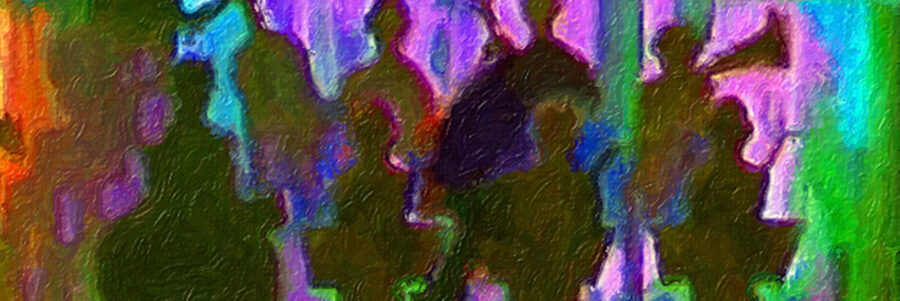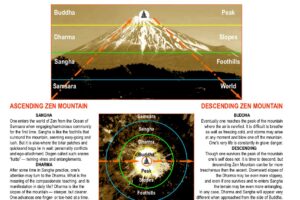
I was recently honored by an invitation to participate in a panel presentation following a luncheon at a local church. It was in recognition of the United Nations resolution establishing World Interfaith Harmony Week, hosted by Faith Alliance of Metro Atlanta (FAMA), featuring a “distinguished panel…made up of Archbishop Wilton Gregory, Ambassador Andy Young, Rabbi Analia Bortz, Tayyibah Taylor, Brother Shankara, Taiun Michael Elliston and moderated by Rev. Dr. Gerald Durley.”
The resolution’s content was included in the flyer:
The United Nations General Assembly passed a resolution in October 2010 deeming the first week of February each year to be “World Interfaith Harmony Week.” The initiative was proposed by King Abdullah of Jordan and co-sponsored by 29 other countries. The language in the resolution includes all people: “Every person of goodwill, with or without faith can and should commit to Love of the Neighbor and Love of God or Love of the Neighbor and Love of the Good.”
…when I think of harmony, I think of two things – firstly, music; and secondly, the third of the Three Treasures, or Jewels, of Buddhism, the Sangha.
zenkai taiun michael elliston, roshi
Speaking on such a panel can be a bit intimidating, especially with limited time and to a large audience in a major Christian church, and in the context of a culture which harbors great misconceptions regarding Buddhism. Not that I found myself in entirely unfamiliar or hostile territory. As it happened, I had met Ambassador Young at the UN many years ago, when he performed the wedding ceremony for Arthur Ashe and his bride Jeannie, my wife’s best friend from childhood. Of course, he didn’t remember me all that well. I also knew the head teacher from the Vedanta center, Brother Shankara, and had met many of the people in the audience when they attended ASZC the prior Sunday. Then there were the folks from Atlanta Interfaith Broadcasters, and others such as Imam Plemon, Ben Johnson and Jan Swanson, instigators of the interfaith program we have hosted for a couple of years. And of course our intrepid interfaith enthusiast, Shiho Gareth Young. So I did not feel so all alone.
As luck would have it, I was the last of the panelists to be introduced, so had time to collect my thoughts, such as they were (Buddhism was, notably, not mentioned by the moderator in his list of the world’s great religions Christianity, Judaism and Islam). When the microphone was passed to me, following initial comments by the other five august panelists on the importance of the UN resolution, I mentioned that we Zen Buddhists are known to be expert, specialists, in silence. But, as one of our famous contemporary teachers, Katagiri Roshi, said, “You have to say something.” Got a laugh.
I hastened to say (we had 5-10 minutes) that when I think of harmony, I think of two things – firstly, music; and secondly, the third of the Three Treasures, or Jewels, of Buddhism, the Sangha. The first because my family was, and is, musical. My late father led a small jazz band beginning in the 1940s and my brother is a professional jazz pianist. This comment endeared me a bit to the Baptist moderator, as he was a big jazz fan, particularly of John Coltrane.
The second, I explained as one of Buddhism’s three highest values. Called “treasures” or “jewels,” they include the familiar buddha, one’s original nature, and the historical Shakyamuni, or “fully awakened one” (the root of buddha means “awake”); dharma, the compassionate teaching as handed down in written form, but also the truth of our experience of existence; and finally sangha as the order of monks and nuns from India, through China and Japan to present times, but also those who comprise the larger community, including those people in the room attending as audience.
I emphasized that sangha is not, however, just any community or group of people, but that its main characteristic, its central attribute, is that of harmony. We all belong to many communities — at home, at work, and in social organizations such as the church or at university — but they are not necessarily harmonious. Another, knowing, laugh. So all communities do not always qualify as a sangha. Including nation states.
This caveat allowed me to agree with the others that the resolution fostering harmony is a welcome and needed effort to try to bridge the gap between nations, as my teacher, Matsuoka Roshi did before and after WWII. He was known as a peace maker and bridge-builder between the two former warring adversaries.
But I wanted to make the point that true harmony, like charity, must begin at home. First we must be harmonious within ourselves, before we can be harmonious with others. And that the way we can do that, the way to do that, is through meditation. At least this is the central method of Soto Zen.
At first, my emphasis on meditation had some heads nodding up and down, but I also sensed a slight chill in the room, some raised eyebrows and frowns. Brother Shankara backed me up directly on a couple of my comments, and by the time I responded to the final question (concerning children, and what people of faith could do to help improve the disastrous state of education, among other things) saying “at risk of sounding like a Johnny-one-note — meditation”; we feel meditation would help greatly; it brought more, warmer, laughter. By that time, many in the room seemed to have embraced the idea. So much so that the Baptist moderator even mentioned meditation in his closing remarks! So I felt somewhat vindicated.
Lately we have witnessed some minor lack of harmony in the ASZC sangha. In the latest board meeting (making the sausage is rarely ever as pleasant as eating it), disharmony appeared in the form of heartfelt but rather contentious dialog. My apologies for my bad, as it may have caused some unnecesary distress in those attending (just as my insistence on the primacy of meditation may have caused some discomfort in those good church people, more accustomed to the exercise of prayer). I have addressed some of the specific issues, and anxieties they seem to engender, in another message to the board. In this commentary I would like to stress the fundamental principles of harmony and trust within the sangha.
As Gyozan Larry LeDuc mentioned in his gracious opening remarks, accepting the responsibilities of his new position (incoming President of the ASZC BOD): within the sangha, including, even especially, at board meetings (and other perhaps tedious but necessary activities) it is important that we regard each of these events as an opportunity to practice. Administrative duties, especially, represent a unique and rare opportunity to observe the tenets of Buddhism — compassion, forbearance, kind speech, et cetera; right conduct, in short — in the interest of maintaining harmony in the sangha.
When we fail to do so, it isn’t the end of the world. Fall down seven times, get up eight, as Master Dogen coached. We must allow for failure, in order to succeed. The approach in Zen is open-minded, experimental, like a scientific experiment. This applies “not only in zazen but in all your daily actions” (Fukanzazengi). As Seirin Barbara Kohn teaches, retreats, especially the longer sesshin, are opportunities to rub up against others in the sangha, and in the process rub off our own rough edges. This is why boards of directors and other positions of responsibility are usually comprised of the elders of the community, those who hopefully are worn smooth (if not completely worn out).
In Crooked Cucumber, David Chadwick reports that Suzuki Roshi once said that sangha is based on trust. I trust you and you trust me; otherwise, no sangha. My teacher, Matsuoka Roshi, once thrust his fist toward my stomach and then his own, saying, “You and me – communication!” This kind of trust, based on gut-level communication, is the glue that holds the sangha, the Zen community, together. The two are inseparable, the former, trust, as the absolute or karmic bond we share; the latter, communication, the skillful means of actualizing it. Failures to communicate are often failures to recognize or acknowledge this fundamental bond.
However, trust is not such a simple thing. It is not simply a matter of either trusting a person entirely or not at all. I have done a lot of analysis of this matter in my former business career, in personal relations, and during my so-called Zen career. We have all experienced betrayals of trust, or perhaps only utter confusion of communication, many times. This gives me a heightened awareness of the interdependent, co-arising nature of sangha, and perhaps some degree of insight into it.
The insight I speak of is not into the deeper underlying motives and machinations of what ultimately makes another person tick. Let’s leave that to the professionals. I see the issue of trust from my perspective, and do not pretend to be able to intuit how others see it. Nonetheless, you may find my view useful. Remembering Huineng’s admonitions that we do not see the behavior of others as their fault, but clearly see our own faults.
As I see it, there are many dimensions, attributes of behavior, that we can either trust or mistrust in one another. This does not have to devolve into a violation of the Precepts of discussing the faults of others, or praising ourselves at others’ expense, however subtly or unintentionally. The aspects that we can trust in others, and that they may trust in us, are both obvious and not so obvious.
Most of us would say we trust (or mistrust) a person’s motives, honesty, et cetera. The suspicious side of the monkey mind, in other words, with which we can’t go on together, thank you brother Elvis. But it is also true that we can trust an individual’s commitment, competency, even their credentials (all C’s – we could do this alphabetically).
Judgment is another salient factor. The list can go on. Negative sides of the same set of traits might include gullibility, naivete, inexperience, and so on. The point here is that we rarely trust every and all aspects of others’ personalities, even when we know them very well. We often hear it said, as the highest compliment, that we can trust an individual with our very life. But maybe not with our bank account.
There are times when that trust, while not betrayed (implying intention), is broken. We have all been let down by those we trusted at some time in life. And there are admittedly times we feel let down, or even betrayed, that turn out to be not the case at all, upon further examination.
This is why the Buddhist Precepts caution against indulging anger, acting on our assumptions, viewing others suspiciously, et cetera. We could be wrong. Of course, we could be right, as well. But better to err on the side of trust, perhaps while verifying.
I certainly do not expect everyone to trust me in every aspect of what is possible to trust, or distrust, as outlined above. I am painfully aware of my own inadequacies. And I am sensitive to the fact that just because my formal Zen students may trust me completely in terms of clarification of the dharma, and the stewardship of their Zen practice, they may not trust the investment of their retirement funds to me, nor for that matter, the oversight and direction of the Zen center’s administration. That would be foolish, on their part as well as mine.
I thought I sensed an undercurrent of distrust in the recent board meeting exchange, but I may have been wrong. It was more likely only confusion based on ignorance of what the Silent Thunder Order really is, and how it works to support Atlanta and all our other sanghas.
But before we leap, we should at least look. Before assuming or accusing, let’s do a fact check. Let’s listen more and talk less. Let us “investigate thoroughly in practice” and not sweat the small stuff. Let us all attempt to bring the perfection of the Paramitas, and the Precepts, into the board room as well as into all other dimensions of our everyday life. Let us all err on the side of respectful silence, if we have nothing positive to contribute.
If we can trust ourselves first, we can eventually come to trust each other. We do not always have to be sure that there is something or someone waiting to cushion our fall. Especially at the top of the 100-foot pole. At that extreme, it is only necessary simply to take that last leap, trusting fully, and without looking at all.









